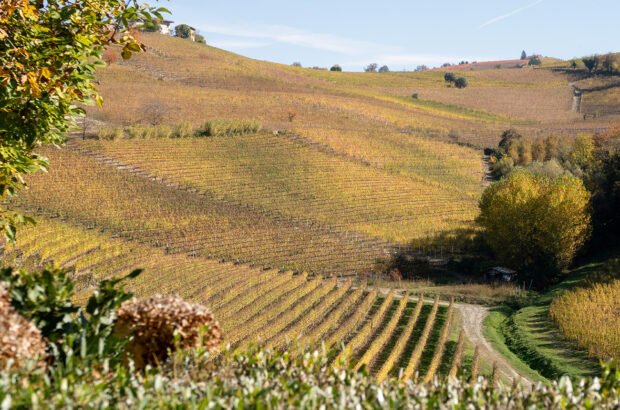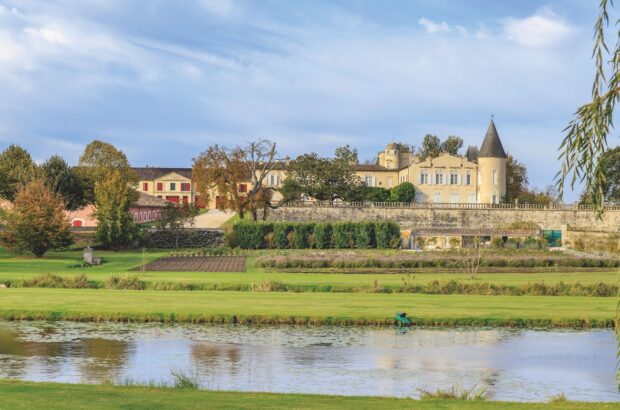Edible flowers are so much more than a pretty garnish on a fancy plate of food. I use flowers for their flavour, much like herbs; nasturtiums for a peppery punch, magnolia for a gingery kick, borage brings a cooling cucumber flavour, or lavender for that cleansing, menthol note. I use them for their beauty; a handful of calendula and cornflower petals scattered through a green salad transforms it from an everyday dish to something truly special. And I use them to connect to the seasons, noting the first primroses peeping through the frozen earth in February and eagerly awaiting the musky elderflower blooms in June. Not to mention the huge benefits they bring to the garden, attracting pollinators, creating biodiversity and bringing so much delight and joy. For me, growing and cooking with flowers is a way to bring beauty, seasonality and unique flavours to my food.
Slow-roast lamb with lavender, lemon & apricots
Being similar to rosemary, lavender is a perfect partner for lamb, its clean, aromatic flavour cutting through the rich fattiness of the meat. I’ve paired it with sweet dried apricots and sharp preserved lemon for a roast that is as delicious with potatoes and vegetables for a Sunday lunch as it is with couscous or freekeh for a Middle East-inspired dinner party. I’ve used dried lavender, because this is a great spring dish to make with new-season lamb, before the lavender is in bloom. If you make it with fresh lavender, the flavour will be stronger, so reduce the amount to 3 teaspoons.
Serves 8
Ingredients
- 6 garlic cloves, finely chopped
- 50g preserved lemon peel, finely chopped
- 4 tsp dried lavender (about 6-8 heads), finely chopped
- 75g dried apricots, coarsely chopped
- 3 tbsp sweet chilli sauce or apple jelly
- couple of pinches of chilli flakes (optional)
- 2 tbsp olive oil
- 2.5kg lamb shoulder, off the bone
- sea salt and freshly ground black pepper
Method
1. Start by making the marinade. Mix the garlic, preserved lemon peel, lavender, apricots and chilli sauce or apple jelly in a small bowl. (If you are using apple jelly, you can add a couple of pinches of chilli flakes for a bit of a kick.) Add 2 tsp salt, a generous grind of pepper and the olive oil, and mix well.
2. Unroll the lamb shoulder and spread three-quarters of the marinade over the inside of the meat. Re-roll the shoulder and secure it with kitchen string to make a neat package. Spread the remaining marinade over the outside of the lamb and season with a little more salt. Wrap in a double layer of kitchen foil, with the final seam on top. The lamb will release lots of juices as it cooks, and you want to trap those in the package to keep it moist and delicious. You can prepare the lamb up to this point the day before and store it in the fridge overnight.
3. Preheat the oven to 160°C/320°F/gas 3. Put the lamb in a deep baking tray (pan) that fits it snugly and cook for 31⁄2 hours, or until tender. Check once or twice during this time, and if the juices are escaping, re-secure the foil.
4. Increase the heat to 200°C/390°F/gas 6, open the foil package and cook for another 30 minutes to crisp up the outside. Leave to rest for at least half an hour somewhere warm before slicing to serve.
Ballymaloe-trained chef Erin Bunting and organic gardener Jo Facer founded The Edible Flower in Northern Ireland in 2016. It is a farm-to-fork supper club, organic smallholding and fledgling cooking and growing school based in Saintfield, County Down. As well as supper clubs, they run a CSA (community-supported agriculture) scheme, cooking, brewing and growing workshops, classes and demos. The Edible Flower is their first cookbook.

The Edible Flower: A Modern Guide to Growing, Cooking & Eating Edible Flowers by Erin Bunting and Jo Facer was published in March 2023 (£30 Laurence King Publishing)
The wines to drink with slow-roast lamb with lavender, lemon & apricots
Although the book is about edible flowers, it’s not just the lavender that will influence this pairing. Given the similarity to rosemary Erin has pointed out, my first thought was a Chianti or other Sangiovese, but I think on reflection that would be too austere with the dried apricots and sweet chilli sauce. Tempranillo, lamb’s soulmate, often comes to the rescue with a full-flavoured dish like this, particularly when the recipe includes a touch of spice, so a fruit-forward Rioja crianza or reserva should do the trick. If you wanted to make it more exotic, though – and it is an exotic recipe – how about a Lebanese red, which would fit in with the Middle-Eastern accompaniments she suggests. Bear in mind that the salty preserved lemon will make any accompanying wine taste sweeter, so I wouldn’t go for a super-ripe Cabernet or Shiraz. Alternatively, you could opt for a strong, dark rosé. I reckon a Tavel would pair particularly well with this dish, or even a Cerasuolo from the Abruzzo.
By Fiona Beckett
Wines selected by our Decanter experts












